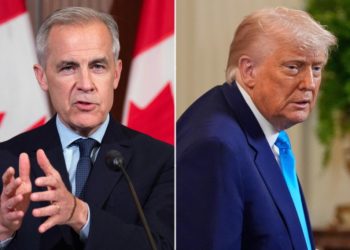Security forces killed at least 27 people in central India on Wednesday, in an operation that the police said had targeted communist militants, as the authorities intensify a military campaign aimed at defeating the country’s decades-old leftist insurgency.
Prabhat Kumar, a police chief in the state of Chhattisgarh, said that “several senior-level Maoist cadres” had been killed or seriously injured in the operation on Wednesday. Local media reported that a top leader of the rebels, Nambala Keshav Rao, who goes by Basavaraju, was among those killed.
Last week, in another bloody confrontation, the government said it had killed 31 members of the movement, usually described as Maoist, in a hilly region between Chhattisgarh and a neighboring state.
Amit Shah, India’s home minister, called that operation a “historic breakthrough.” He has set a deadline of March for wiping out the whole of the insurgency, which has raged fitfully for more than 50 years.
Human rights activists have called for investigations into whether all those killed were indeed militants, or whether innocent civilians were among the dead.
Bela Bhatia, a lawyer who works in regions affected by the insurgency, said that while rapid identification of the bodies by family members was crucial, the government often took days to present corpses.
In addition, she said, it was unclear if “the killed Maoists surrendered and were then killed, or if they died in an encounter.”
India’s Maoist movement began as a guerrilla-style insurgency in the 1960s, when offshoots of Communist parties took up arms in the name of creating a classless society. It started in the eastern parts of the country and spread to the central and southern regions. The places where they are still active are collectively called the Red Corridor, a mostly forested area abundant in natural resources.
At its inception, the movement was a struggle for redistribution of land among landless farmers. Later, the cause became more associated with the rights of the 9 percent of Indians who belong to Indigenous minority groups. The fighters’ leaders have said they aim to protect tribal communities’ access to natural resources.
The Indian state regards the Maoists as an enormous threat. In 2009, the prime minister at the time, Manmohan Singh, called them the country’s “biggest internal security challenge.” He made that assessment even after Islamist terrorists from Pakistan had been linked just a year before to a devastating attack in Mumbai.
During that period, India’s security forces were escalating a military campaign to defeat the Maoists. The conflict has claimed thousands of lives on both sides in the past five decades.
The current operations, which are happening under the shadow of a frightening military exchange this month with Pakistan, are proving to be deadly even by historical standards. So far this year, more than 200 insurgents have been killed, according to government data. Another 700 have given up arms and surrendered, the government says.
Along with the sprint to crush the insurgency directly, Prime Minister Narendra Modi’s government has undertaken development initiatives, like building wider roads to the remote regions where the movement has thrived. The hope has been that greater outreach to local residents, most of them tribal minorities, might persuade them to oppose the insurgents.
“But the people are suspicious,” Ms. Bhatia said. Many of the people who live in those parts of the country depend on the forest for their livelihood. “They wonder if this development is only to aid in mining and exploiting natural resources,” Ms. Bhatia said.
Pragati K.B. is a reporter for The Times based in New Delhi, covering news from across India.
The post India’s Security Forces Kill Dozens in a Bid to Crush Leftist Rebels appeared first on New York Times.




